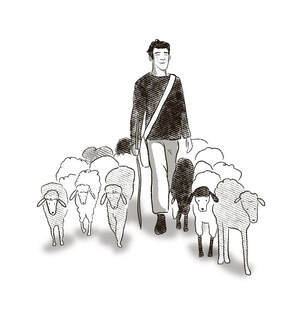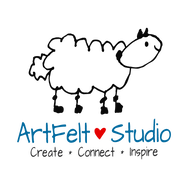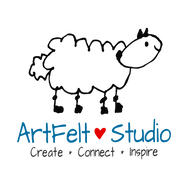What is Felting?

Let's keep it simple.
As wool fibres grow on a sheep, they are coated with a natural wax which sheep produce, called lanolin. To process wool, the sheep is sheared and the wool is washed to remove the lanolin. The wool is then dyed and combed (which is called carding). This process produces a 100% wool product called roving which is perfect for felting. Each fibre of wool has microscopic scales that have barbs on them. When dry, these scales are closed and the barbs cannot grab onto one another.
To transform wool into felt you need 5 basic things. Wool, water, heat, soap, and agitation. Wool is hollow so when water is added to wool fibres, the water is absorbed into the centre of the wool fibre and it pushes the scales and barbs open. Soap helps with lubrication and agitating the fibres causes the opened scales/barbs to grab on to one another. Water temperature affects the speed at which things will felt together. Warm water is generally used but cool water works too, it just takes a bit longer.
As wool fibres grow on a sheep, they are coated with a natural wax which sheep produce, called lanolin. To process wool, the sheep is sheared and the wool is washed to remove the lanolin. The wool is then dyed and combed (which is called carding). This process produces a 100% wool product called roving which is perfect for felting. Each fibre of wool has microscopic scales that have barbs on them. When dry, these scales are closed and the barbs cannot grab onto one another.
To transform wool into felt you need 5 basic things. Wool, water, heat, soap, and agitation. Wool is hollow so when water is added to wool fibres, the water is absorbed into the centre of the wool fibre and it pushes the scales and barbs open. Soap helps with lubrication and agitating the fibres causes the opened scales/barbs to grab on to one another. Water temperature affects the speed at which things will felt together. Warm water is generally used but cool water works too, it just takes a bit longer.

